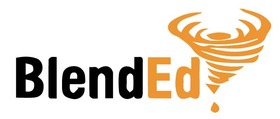"The Most Dangerous Game" Imagery Table
"The Most Dangerous Game" Imagery Table
Description of the Lesson
Overview
This lesson was created by Renste Moeller as part of the Nebraska ESUCC Special Project Digital Age Skills.
After reading “The Most Dangerous Game” students will comb through the text to pull out the best examples of imagery from the story. They will work together in groups of three to collect five examples (per person) of imagery. Students must be able to see each other’s examples, so they don’t repeat them, but also help each other identify which imagery is being documented.
ISTE Standard
3c Curate information from digital resources using a variety of tools and methods to create collections of artifacts that demonstrate meaningful connections or conclusions.
NE Standard
LA 10.1.6.c Analyze the function and critique the effects of the author‘s use of literary
devices (e.g., simile, metaphor, personification, idiom, oxymoron, hyperbole,
alliteration, onomatopoeia, analogy, dialect, tone, mood).
Rubric Used for Assessment
NA
Example Student Artifact(s)
Lesson Design Reflection
Personal Reflection
I think the lesson went really well. Students were engaged and focused on locating a variety of imagery examples from the text. I might have the students select their favorite example of imagery and create a Google Drawing over it next time I teach the lesson.
I used Google Docs since students are familiar with the program and it is easily accessible. They've used Popplet in the past, but it would have taken a learning curve for the students to really implement the app and the sharing feature wasn't what I needed it to be for this assignment.
Hook: What is imagery? What is the purpose of imagery in a short story? What are the five types of imagery?
We'd discussed examples of imagery throughout the reading of "The Most Dangerous Game" and I provided those examples within the Google Doc so that students could see them in their specific categories. Students were assigned in groups with a group leader who was responsible for sharing the document with the others in the group. Then, students were instructed to select a color that would identify their additions to the document. It needed to be different from the group members, noticeably different, and bright enough to see on the screen. Lime green was an example of a color not to select. Students were then given class time to pick a minimum of five examples (from a variety of categories, but not one from each) and list them on the document. Examples were not to be repeated and needed to be cited in MLA format with the page number and lines. Extra credit was given, a half a point, for every correct example up to ten. So students did provide fifteen examples for the full extra credit. They were excited for extra credit since I often don't give them the chance. Even my students who are distracted or disengaged were focused on reading through the text and making sure a group member hadn't taken their example. It was fun to watch them analyze the text for imagery.
